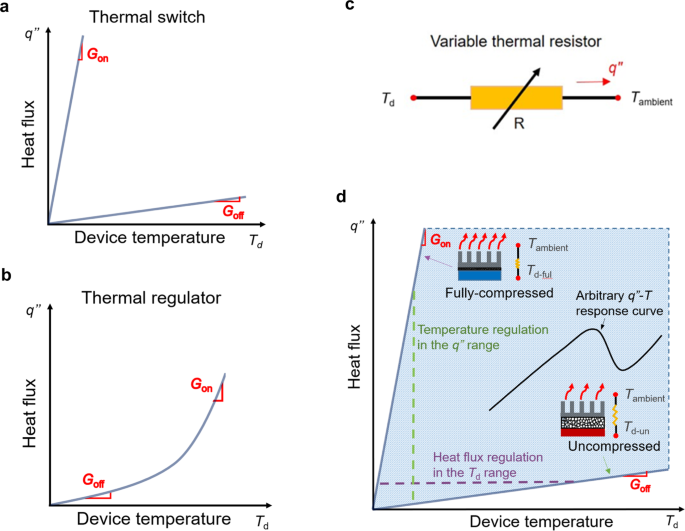2023-06-12 パデュー大学
◆この技術は将来的には電気自動車のバッテリーや科学・産業用のセンサーや検出器、さまざまな電子機器への応用が期待されています。さらに、装置の性能を向上させるための研究や自動化の取り組みも行われています。
<関連情報>
- https://www.purdue.edu/newsroom/releases/2023/Q2/beyond-on-and-off-purdue-engineers-create-continuously-tunable-thermal-regulators-for-batteries-and-electronic-devices.html
- https://pubs.acs.org/doi/10.1021/acsami.2c10880
- https://www.nature.com/articles/s41467-021-25083-8
圧縮されたフレキシブルグラフェンフォームにおける非従来型かつ動的な熱伝導率の異方性 Unconventional and Dynamically Anisotropic Thermal Conductivity in Compressed Flexible Graphene Foams
Zixin Xiong, Amy Marconnet, and Xiulin Ruan
ACS Applied Materials & Interfaces Published:October 18, 2022
DOI:https://doi.org/10.1021/acsami.2c10880

Abstract
Although a variety of methods to predict the effective thermal conductivity of porous foams have been proposed, the response of such materials under dynamic compressive loading has generally not been considered. Understanding the dynamic thermal behavior will widen the potential applications of porous foams and provide insights into methods of modifying material properties to achieve desired performance. Previous experimental work on the thermal conductivity of a flexible graphene composite under compression showed intriguing behavior: the cross-plane thermal conductivity remained approximately constant with increasing compression, despite the increasing mass density. In this work, we use molecular dynamics (MD) simulations and finite element analysis to study the variation in both the cross-plane and in-plane thermal conductivities by compressing isotropic graphene foams. We have found that, interestingly, the cross-plane thermal conductivity decreases with compression while the in-plane thermal conductivity increases; hence, the dynamic thermal transport of the graphene foam becomes anisotropic with a significant anisotropy ratio. Such observations cannot be explained by the conventional effective medium theory, which describes the increase of thermal conductivity to be proportional to mass density. Thus, we propose a model that can describe such anisotropic effective thermal conductivity of highly porous open-cell media during compression. The model is validated against the MD simulations as well as a larger-scale finite element simulation of an open-cell foam geometry.
圧縮性グラフェン複合発泡体に基づく、広範囲な連続調整可能で高速な熱スイッチング Wide range continuously tunable and fast thermal switching based on compressible graphene composite foams
Tingting Du,Zixin Xiong,Luis Delgado,Weizhi Liao,Joseph Peoples,Rajath Kantharaj,Prabudhya Roy Chowdhury,Amy Marconnet & Xiulin Ruan
Nature Communications Published:13 August 2021
DOI:https://doi.org/10.1038/s41467-021-25083-8

Abstract
Thermal switches have gained intense interest recently for enabling dynamic thermal management of electronic devices and batteries that need to function at dramatically varied ambient or operating conditions. However, current approaches have limitations such as the lack of continuous tunability, low switching ratio, low speed, and not being scalable. Here, a continuously tunable, wide-range, and fast thermal switching approach is proposed and demonstrated using compressible graphene composite foams. Large (~8x) continuous tuning of the thermal resistance is achieved from the uncompressed to the fully compressed state. Environmental chamber experiments show that our variable thermal resistor can precisely stabilize the operating temperature of a heat generating device while the ambient temperature varies continuously by ~10 °C or the heat generation rate varies by a factor of 2.7. This thermal device is promising for dynamic control of operating temperatures in battery thermal management, space conditioning, vehicle thermal comfort, and thermal energy storage.



